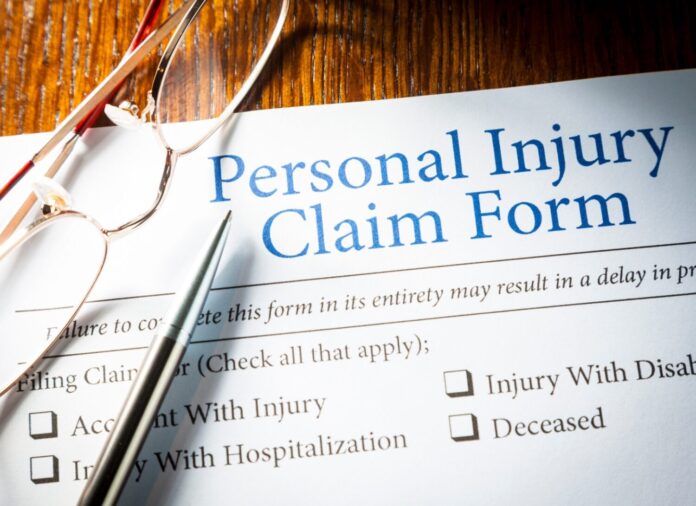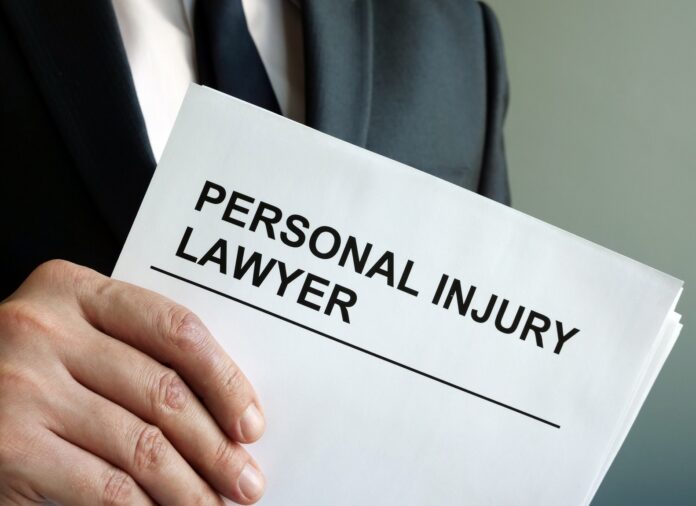Personal injury law, or tort law, might seem complex at first glance. However, understanding its basics is imperative if you’ve been injured due to someone else’s negligence or intentional acts. This beginner’s guide will demystify personal injury law, exploring common types of cases, the statute of limitations, and the key steps involved in filing a lawsuit.

Common Types of Cases
The most prevalent types of personal injury cases range from vehicular accidents involving cars, motorcycles, and trucks to premises liability cases, like slip and fall accidents or dog bites. Product liability, medical malpractice, and wrongful death cases also fall under personal injury law. If you suffer an injury that another person or entity could have prevented, you might have a valid personal injury claim.
Personal injury law aims to provide a legal remedy, usually monetary compensation, for the aggrieved party to cover medical expenses, lost income, and non-economic damages like pain and suffering.
Statute of Limitations
The statute of limitations in personal injury law varies depending on the jurisdiction. In the United States, each state has its own specific time frame within which a personal injury lawsuit must be filed. Generally, this period ranges from one to six years from the date of the injury. However, there are exceptions and variations that can affect this time frame.
For instance, in some states, the clock may start ticking not from the date of injury, but from the date when the injury was discovered or should have been reasonably discovered. This is known as the “discovery rule.” Additionally, certain circumstances such as the injured person being a minor, or the defendant leaving the state, can toll or pause the statute of limitations.
It’s important to consult an attorney who is well-versed in the specific laws of the relevant jurisdiction to obtain precise information and guidance regarding the statute of limitations for a particular personal injury case. For example, you would consult a New Orleans personal injury lawyer if you are in the state of Louisiana.

Why Should You Hire a Personal Injury Lawyer?
After experiencing an accident resulting in personal injury, hiring a personal injury lawyer is a crucial step towards protecting your rights and pursuing fair compensation. With their legal expertise and knowledge, these professionals navigate the complex legal landscape surrounding personal injury cases. This article highlights key reasons to enlist the services of a personal injury lawyer and explores the benefits they provide throughout the legal process.
- Legal Expertise: Personal injury lawyers possess in-depth knowledge of personal injury laws and the legal procedures involved. They understand the intricacies of accident cases, allowing them to provide valuable guidance tailored to your specific circumstances.
- Protecting Your Rights: By hiring a personal injury lawyer, you ensure that your rights are safeguarded. These lawyers serve as staunch advocates who prevent insurance companies or opposing parties from taking advantage of you. Their expertise shields you from inadequate settlement offers and tactics aimed at minimising your claim.
- Case Evaluation: A personal injury lawyer conducts a thorough evaluation of your case to determine its strength and viability. They offer an honest assessment, outlining potential outcomes and advising you on the best course of action. This evaluation helps you make informed decisions regarding pursuing legal action.
- Negotiation Skills: One of the significant advantages of hiring a personal injury lawyer is their adept negotiation skills. They possess the ability to engage in discussions and handle settlement negotiations with insurance companies or the opposing party. Their goal is to secure a fair settlement that fully compensates you for your injuries, damages, and losses.
- Managing Insurance Companies: Dealing with insurance companies can be challenging and overwhelming. Personal injury lawyers handle all communication with insurance adjusters, ensuring that your rights are protected and preventing any potential tactics that may devalue or deny your claim. This relieves you of the burden of navigating complex conversations and allows the lawyer to advocate for your best interests effectively.

Key Steps in Filing a Lawsuit
1. Consultation
Your journey begins with a consultation with a personal injury lawyer. During this initial meeting, you’ll discuss the details of your case, including the nature of the injury and the circumstances surrounding the incident. Your lawyer will evaluate the strength of your case, estimate potential compensation, and outline the subsequent steps. This is also an opportunity to ask questions and clarify doubts about the legal process ahead.
2. Investigation
Once your attorney takes on your case, they will initiate a thorough investigation to collect the necessary evidence. They’ll secure medical records to establish the extent of your injuries, obtain police reports if available, interview witnesses, and may even enlist the help of accident reconstruction experts or medical specialists. The goal is to gather as much information as possible to build a robust case that proves the other party’s liability.
3. Demand Letter
After your attorney has a comprehensive understanding of your case, they will draft and send a demand letter to the at-fault party’s insurance company. This letter details your injuries, the associated costs, lost wages, and non-economic damages like pain and suffering. It also states the compensation you are seeking to cover these damages.

4. Negotiations
If the insurance company accepts their client’s liability, they may negotiate a settlement. During this phase, your attorney will advocate on your behalf, striving to secure the highest compensation possible. It’s important to have an experienced lawyer who can effectively counter low-ball settlement offers and present a persuasive case for full and fair compensation.
5. Filing a Lawsuit
If a satisfactory settlement can’t be reached, your lawyer will then file a lawsuit. This legal action begins a phase known as discovery, where both sides exchange information and evidence. There may also be pre-trial motions aimed at resolving certain issues before trial. Your attorney will prepare you for potential depositions and keep you informed throughout this process.
6. Resolution
The final step is the resolution of your case. If it goes to trial, a judge or jury will make a decision. If both parties agree on a compensation amount before trial, the case can be resolved through a settlement. Regardless of the path, your attorney will be there, guiding you through and working tirelessly to secure a favourable outcome.

Understanding personal injury law commences you safeguarding your rights and seeking rightful compensation. Though this guide offers an overview, remember that personal injury law varies by state and each case is unique. Consulting with a seasoned personal injury attorney can provide personalised guidance, helping you to reach a just resolution.





![Calgary’s Hottest Neighborhoods for Luxury Homebuyers [2024]](https://thewashingtonote.com/wp-content/uploads/2024/04/Calgary-324x160.png)



